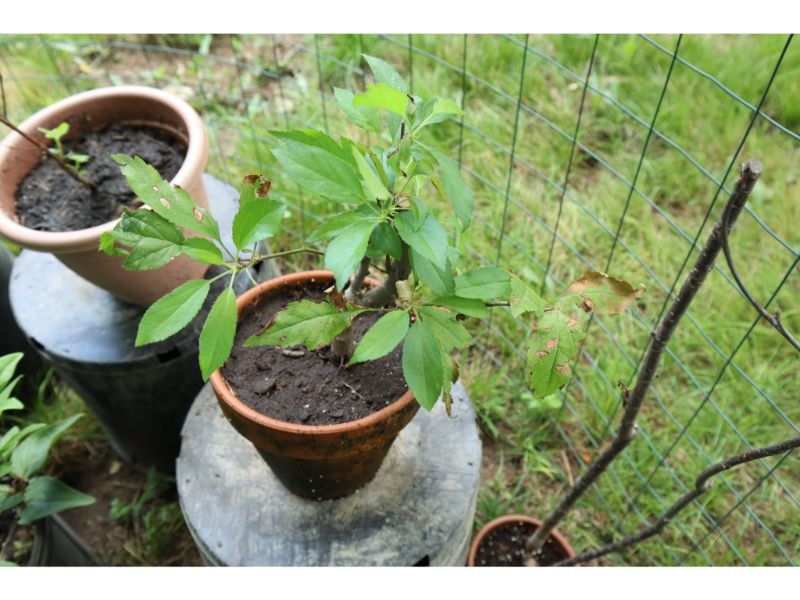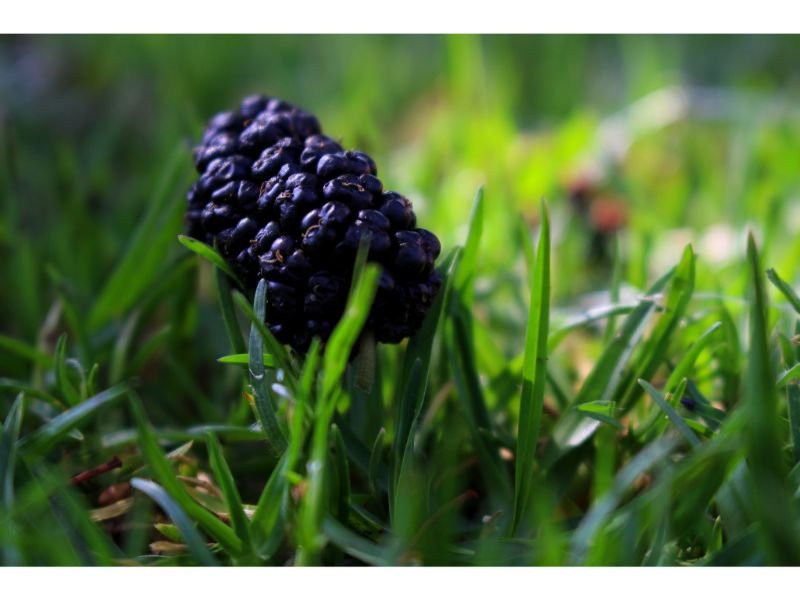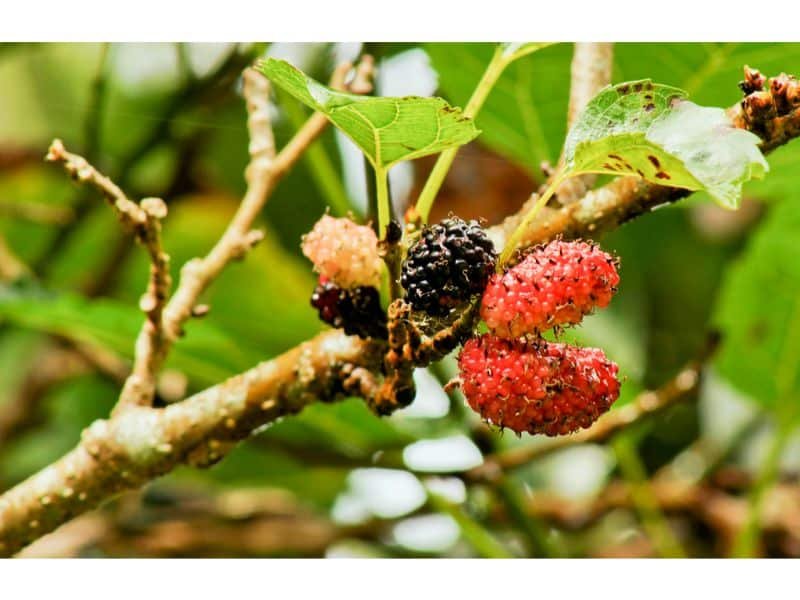Mulberry seedlings can make a fantastic and beneficial addition to your garden, providing you with tasty and nutritious fruit that can be enjoyed fresh or utilized in various recipes. In this article, we’ll guide you through everything you need to know about planting, growing, and nurturing mulberry seedlings.
Table of Contents
Selecting the Perfect Spot for Your Mulberry Seedlings

Choosing the appropriate location is the initial step in planting mulberry seedlings. Mulberry trees thrive in well-drained soil and full sun, and though they can grow in various soil types, loamy soil is the best. When selecting a location for your mulberry seedlings, avoid placing them too close to other trees or structures as they have a sprawling root system that can compete with other trees for nutrients and water.
Here are some additional ideas to consider:
- Sunlight: Mulberry trees require full sun exposure to thrive, so choose a location that receives at least 6 hours of direct sunlight every day.
- Soil quality: The soil quality is a significant factor in the growth of your mulberry seedlings. Ensure that the soil is well-drained and has a pH level between 5.5 and 6.5. You can get your soil tested for pH levels at a local nursery or garden center.
- Space: Mulberry trees have a sprawling root system and can grow up to 30 feet tall and wide. Therefore, it is essential to select a location that provides sufficient space for the tree to grow and spread.
- Wind protection: Strong winds can damage your mulberry tree, so choose a location that provides some protection against high winds. Planting your tree near a fence, wall, or larger trees can help protect it from the wind.
- Accessibility: Mulberry trees require regular care and maintenance, including pruning and harvesting. Therefore, choose a location that is easily accessible, so you can tend to your tree without any difficulty.
By considering these factors, you can choose the perfect location for your mulberry seedlings and ensure that they grow into healthy and productive trees.
Planting Your Mulberry Seedlings

When planting your mulberry seedlings, ensure that the hole is twice as wide and just as deep as the root ball. Remove any grass or weeds from the area around the hole. Before planting, mix compost or well-rotted manure into the soil. Put the seedling in the hole and backfill it with soil, ensuring that the top of the root ball is level with the surrounding soil. Water the seedling thoroughly and place a layer of mulch around the base of the tree.
Here are some additional ideas to consider when planting your mulberry seedlings:
- Timing: The best time to plant your mulberry seedlings is in the spring or fall when the weather is mild. Avoid planting in extreme heat or cold as it can stress the young tree.
- Soil preparation: In addition to adding compost or well-rotted manure, you can also add some organic fertilizers to provide nutrients to the soil. Organic fertilizers slowly release nutrients over time, providing a steady supply of nutrients to the tree.
- Watering: Water your mulberry seedlings deeply after planting and regularly during the first year to help establish the roots. Avoid overwatering, which can lead to root rot. Water the tree once a week, ensuring that the soil around the tree is moist but not waterlogged.
- Mulching: Mulching around the base of the tree helps retain soil moisture, suppress weeds, and regulate soil temperature. Use organic mulch, such as bark chips or straw, and apply a layer of 2-3 inches deep around the base of the tree.
- Stake the tree: If your tree is not self-supporting, stake it to provide support while it establishes its roots. Use a stake that is at least as tall as the tree and secure it to the trunk with a soft material to avoid damaging the bark.
Caring for Your Mulberry Seedlings

Mulberry seedlings necessitate regular watering, particularly during the first year after planting. Deeply water once a week, ensuring that the soil around the tree is moist but not waterlogged. In the second year, decrease the frequency of watering to once every two weeks. Once a year in the spring, fertilize your mulberry seedlings with a balanced fertilizer. In the winter, prune your mulberry tree to remove any dead or diseased wood and to shape the tree.
Here are some additional ideas on caring for your mulberry seedlings:
- Mulberry seedlings are generally low maintenance, but consistent care will ensure optimal growth and fruit production.
- To prevent damage to the roots, avoid overwatering or letting the soil become waterlogged.
- If you notice any signs of pests or disease, address them promptly to prevent further damage to the tree.
- During hot and dry periods, increase the frequency of watering to keep the soil moist.
- Mulberry trees are generally hardy, but extreme weather conditions such as frost or high winds can cause damage. Keep an eye on your tree during severe weather and take any necessary precautions.
- Pruning your mulberry tree annually helps to maintain its size and shape, as well as promote new growth and fruit production.
- Mulberry wood can be used for a variety of crafts, such as woodworking, carving, or even smoking meat.
Overall, caring for your mulberry seedlings involves consistent watering, occasional fertilizing, and annual pruning. With proper care, your mulberry tree can provide a bountiful harvest of delicious and nutritious fruit for many years to come.
Harvesting Your Mulberries
Mulberries are ripe for harvesting in the summer when they are fully ripe. The fruit will be dark purple or black and will detach from the tree easily when pulled. Mulberries are fragile, so handle them with care. Wash them gently and remove the stems before eating or cooking. Mulberries can be consumed fresh or used in a variety of recipes, such as jams, pies, and smoothies.
In Conclusion
Growing mulberry seedlings is a satisfying experience. With a little care and attention, you can reap a bountiful harvest of delicious and nutritious fruit. Remember to choose the appropriate location for your tree, plant it correctly, and care for it properly. And most importantly, savor the fruits of your labor!

Gardening is my passion and growing plants indoors has always been a stress relief for me. Grow a banana tree in my apartment once (although failed to produce bananas).






